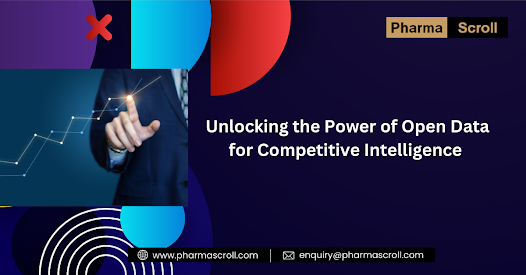In today’s competitive business landscape, it is not enough to simply know your competitors. Companies must be able to use data effectively to gain an edge in the market. But where does this data come from? Open data is a valuable source of insight that can provide companies with a unique advantage when it comes to understanding and outsmarting their competition. Let’s take a closer look at why open data is essential for success in Competitive Intelligence.
 |
| Competitive Intelligence |
What Is Open Data?
Open data is publicly available information that can be used, reused, and redistributed freely by anyone who wishes to access it. This type of data has been made available through government initiatives, public databases, and even some private organizations.
Open data typically includes demographic information, economic statistics, location-related details, and other types of information that can be used to aid in decision-making processes. It is usually released in forms such as CSV files or spreadsheets so that it can easily be accessed and analyzed by those who need it.
The Benefits of Using Open Data for Competitive Intelligence
One of the primary benefits of using open data for Competitive Intelligence is that it provides companies with access to a wealth of information about their competitors without having to rely on costly third-party services or spend time gathering the data themselves. With open data, companies can gain insights into their competitors’ strategies and operations, which will give them an edge over their rivals.
Additionally, open data allows companies to make more informed decisions about their own strategies since they will have access to real-time information about their competitors’ activities. They can use this knowledge to adjust their tactics accordingly and stay ahead of the competition.
Open Data Security Considerations
When using open data for competitive intelligence purposes, there are certain security considerations that must be kept in mind. For example, companies should only use open sources if they are confident that the source is reliable and up-to-date. Additionally, any collected information should be protected from unauthorized access so as not to run afoul of any privacy laws or regulations that may apply in a given jurisdiction.
Finally, all collected information should also be stored securely so as not to fall into the wrong hands or be used inappropriately by malicious actors. Companies should take these steps before using open data as part of their competitive intelligence efforts so they can do so safely and responsibly while still reaping all its benefits.
Conclusion:
Overall, leveraging open data for competitive intelligence purposes is an effective way for businesses to gain an advantage over their rivals while staying compliant with applicable regulations and laws. However, companies must ensure they understand how best to protect any collected information from unauthorized access as well as store it securely before utilizing open sources for competitive intelligence purposes, so they do not inadvertently put themselves at risk or find themselves in violation of any applicable regulations or laws. By taking these precautions into account beforehand, businesses will reap all the rewards associated with using open sources while staying safe from potential legal issues down the line.
Learn More: https://rb.gy/xndzz
Contact us: enquiry@pharmascroll.com



.png)
.png)